Zaborin
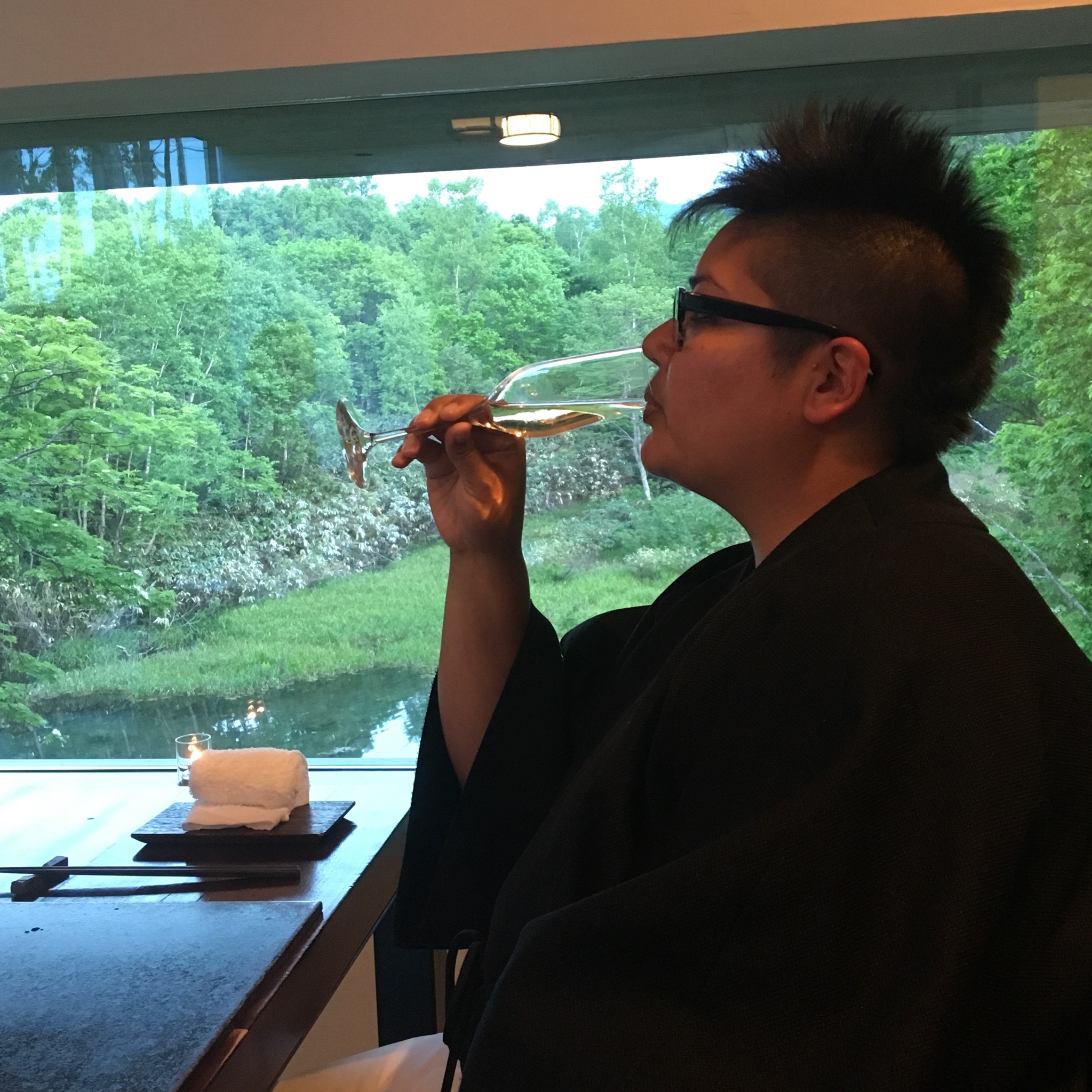
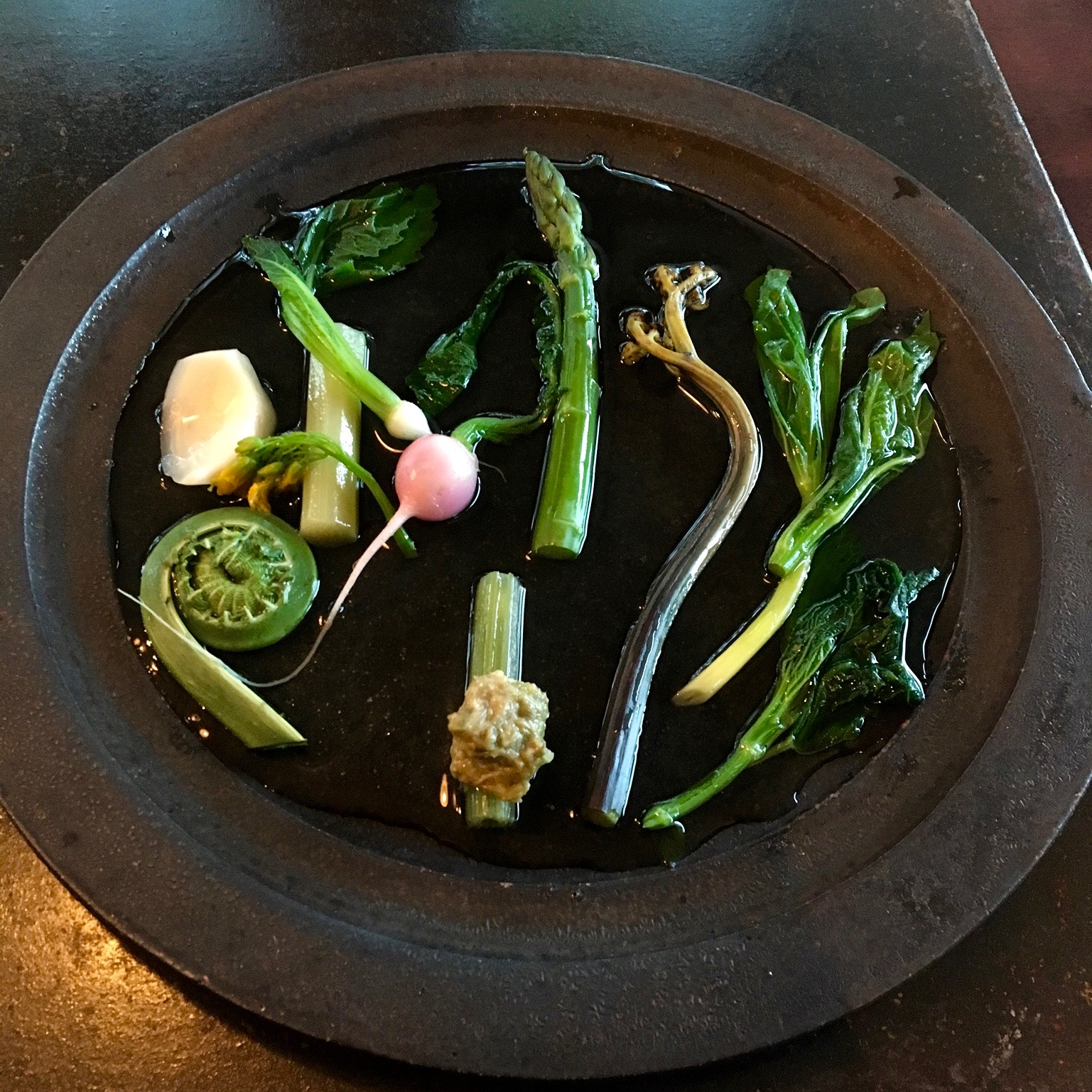
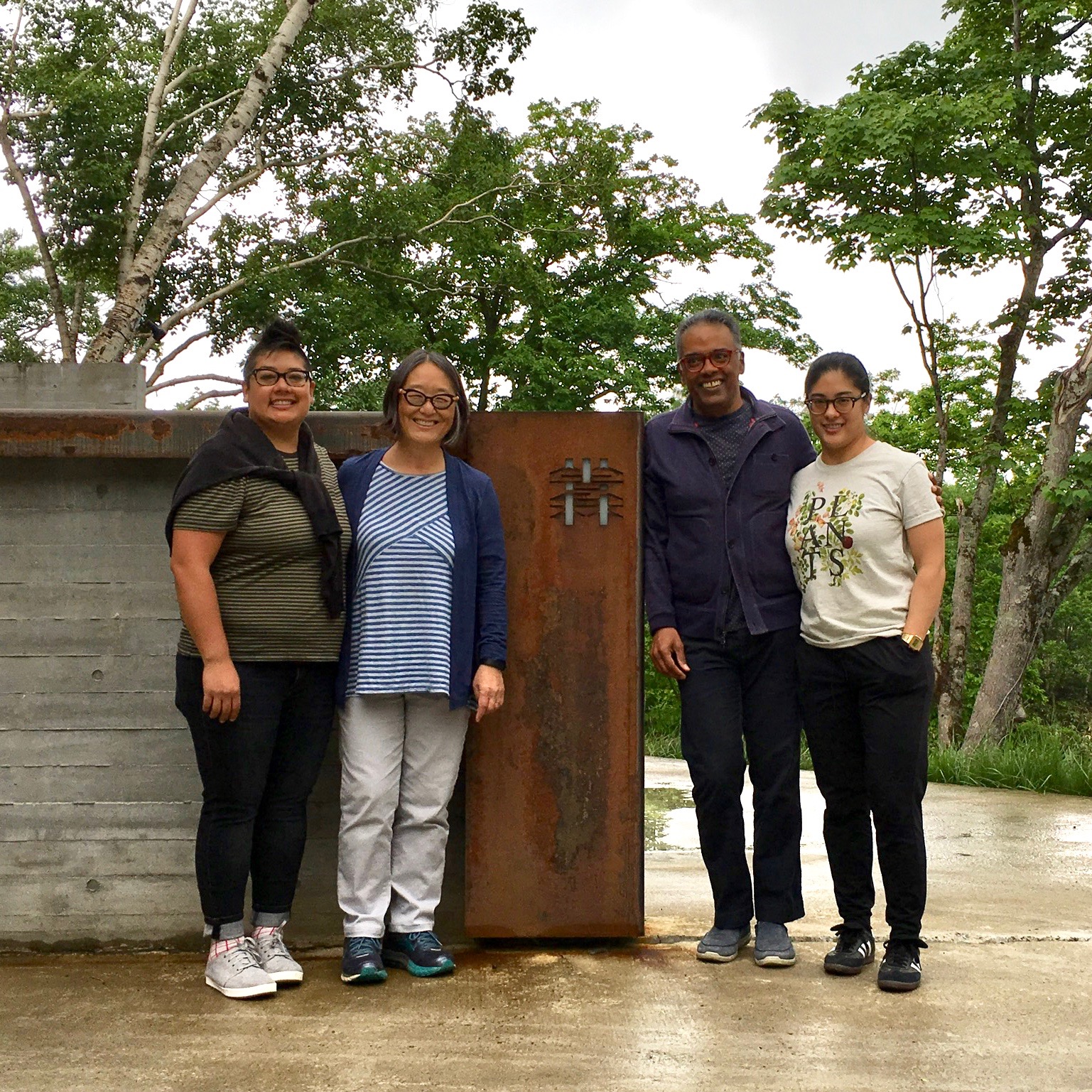
Mäneka
Words and photos do not suffice. Zaborin is a modern take on a traditional Japanese ryokan and hot spring: a concrete and metal oasis hidden in away in the Hokkaido forests. The name loosely translates to “a place to sit and forget in the woods.” When researching Hokkaido, the promise of both indoor and outdoor private onsens accompanied by fabulous kaiseki was too much to resist. While we only stayed for one night, Zaborin has to be one of my favorite places on earth. The scent of wood-burning fireplaces immediately greets you upon arrival. At this point we donned samue in lieu of traditional yukata to indicate to the world that we had officially entered relaxation mode.
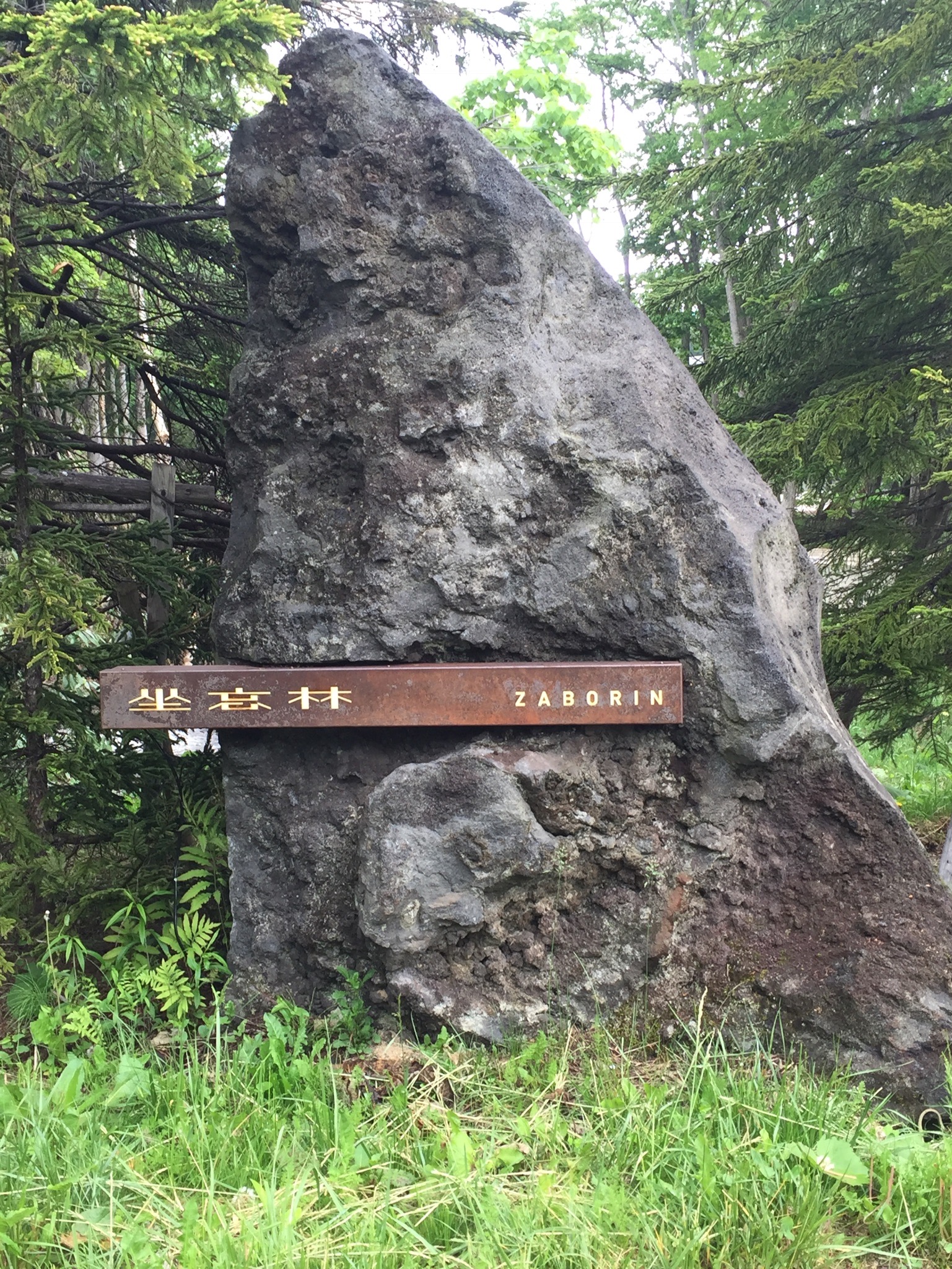
A wonderful multi-course dinner quickly followed. While the entire meal was a spectacular take on updated kaiseki, the two dessert courses were particularly memorable. The first was a fir jelly topped with a lemongrass juice. The piney-ness of the jelly harmonized perfectly with the sweet, citrusy syrup. It felt like were cleansing our palates with the air of the surrounding forest. The final course was a monaka filled with corn custard and ice cream as well as pieces of anko. Basically the best corn-y Japanese ice cream sandwich you could imagine, with impeccably fresh and crisp cookies. But since it was too dark to get a picture of it, here is a photo of the A+ sashimi plate. The shrimp was so creamy.
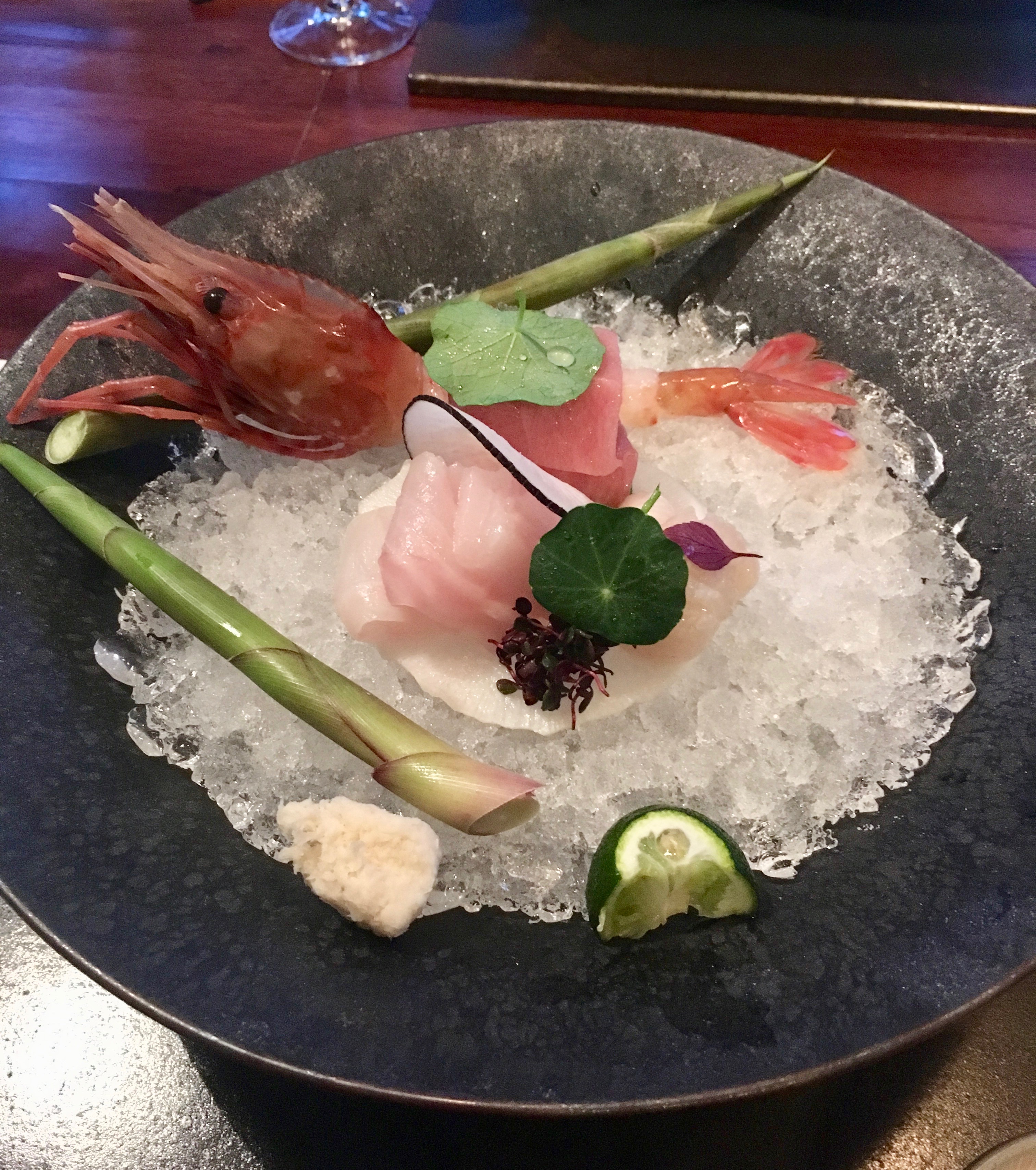
The pleasures of nighttime outdoor onsen soaks can’t be overstated. Sweating it out and limbering up in the hot water fully prepared me for a good sleep. After several painful nights on the hard mattresses and pillows in Otaru, the comfortable tatamis ushered Kamala and me into peaceful sleep.
The next day our breakfast was as stunning as dinner, with a few dabbling mallards to entertain us in the nearby creek. Because I don’t like eggs, the chef was kind enough to prepare for me a substitute, “fish with vinegar,” a description which does not do it justice. We also got a basket of fresh asparagus and tomatoes, grown on the inn’s very own farm. I don’t even like vegetables that much, but accompanied by the moromi miso, these were worth raving about.
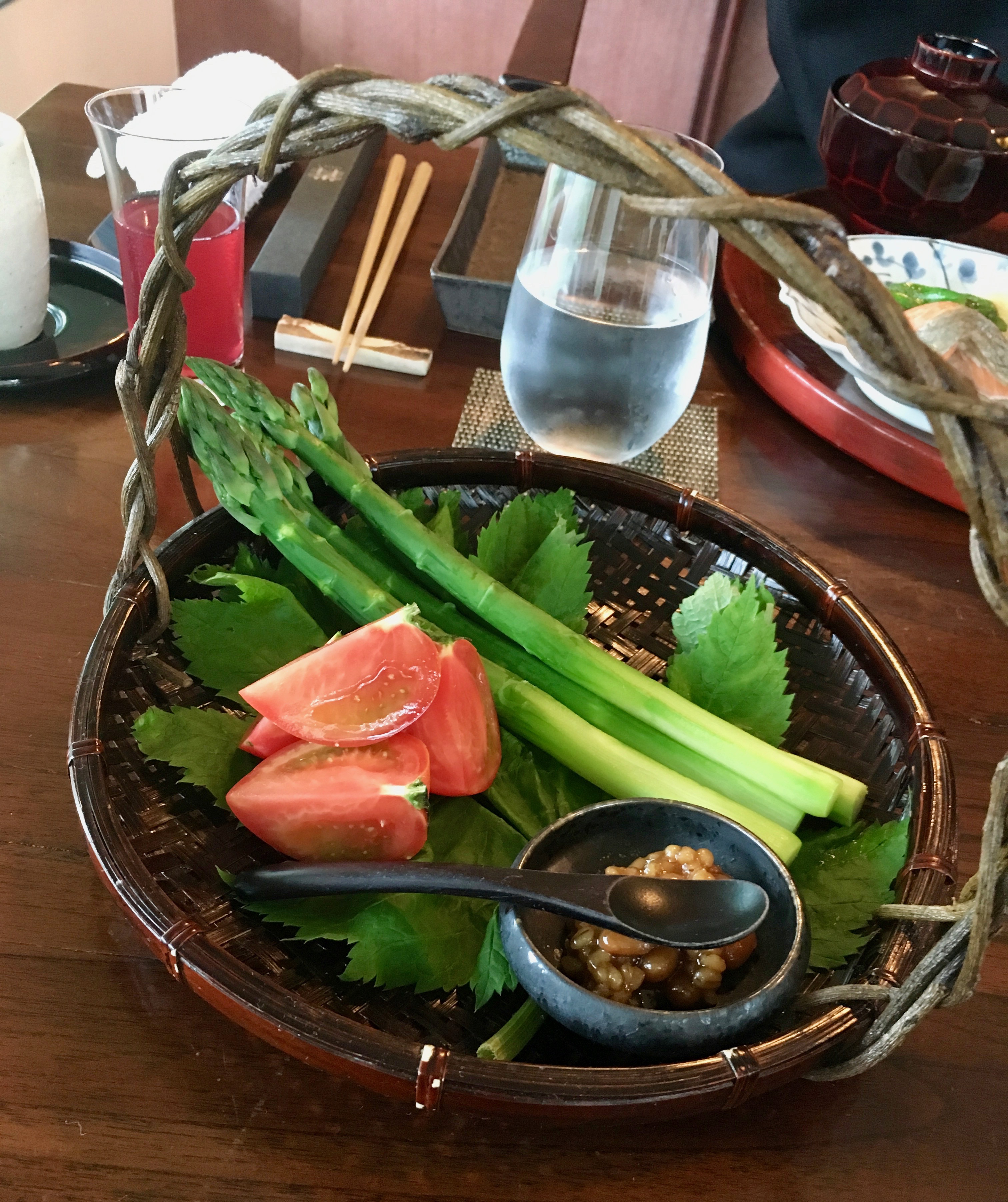
Kamala
When you walk into the spacious cement entryway at Zaborin, the first thing you notice is the the scent of a piney wood slowly smoldering. It’s almost a surprise to find logs burning in a very angular cement fireplace, since, while there is a hint of a smokiness in the air, it’s so clear and fresh because the smoke is soundlessly sucked up by a beautifully sculpted matte black hood. That’s the essence of Zaborin: they’re already so many steps ahead of you, that even if you tried, I don’t think it’s possible to have a less than ideal experience.
The aesthetic of the place is striking. The architecture is extremely modernist, full of clean lines, giant windows, negative space and hard materials. But it’s also located deep in the forest in Kutchan, so there’s a way in which the organic woods make their way in through windows and into the decor, and there’s a warmth and sense of wonder that fills the minimalist style. It’s very Japanese in the best of ways.
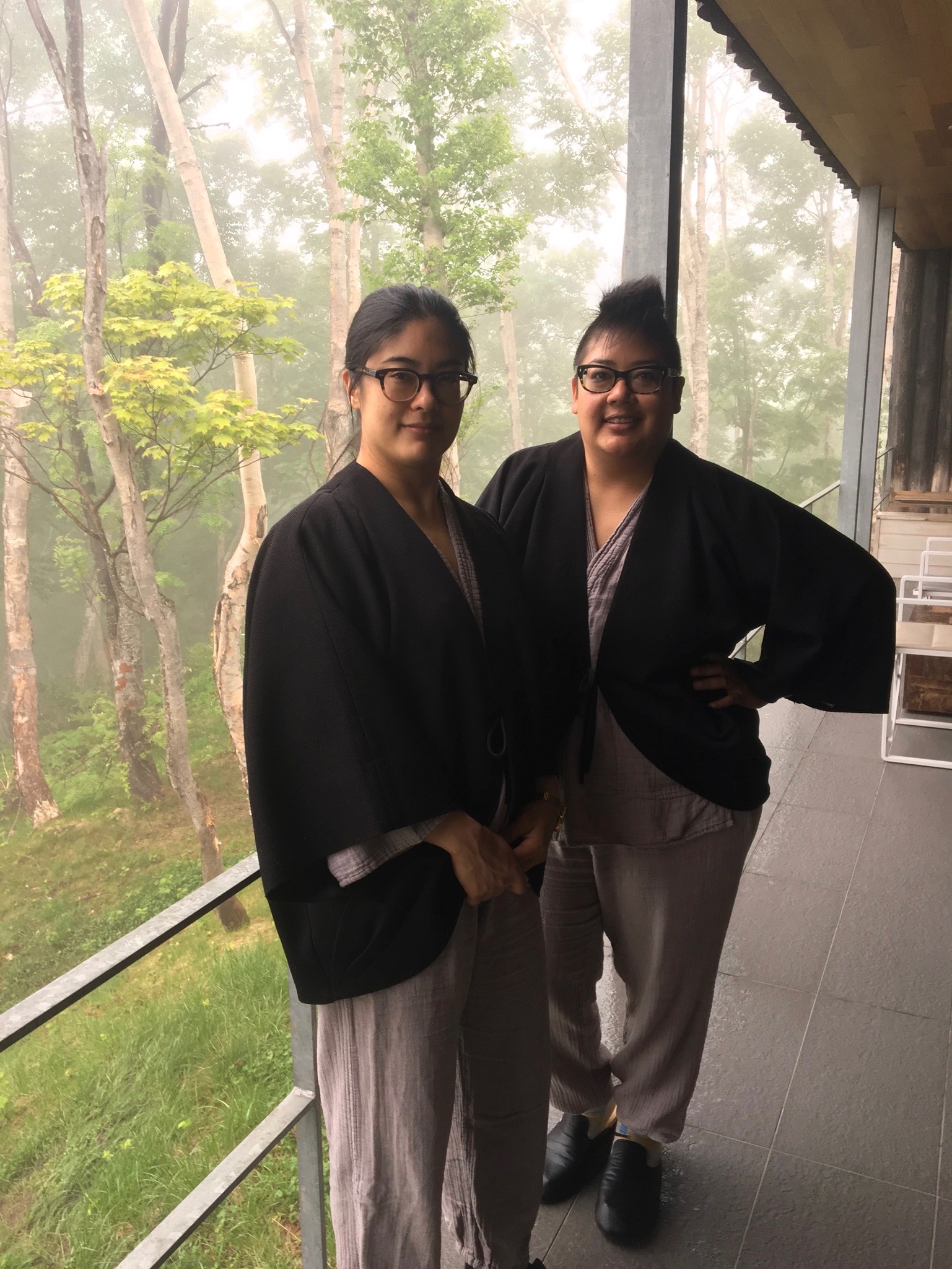
It’s safe to say that this the nicest place I’ve ever stayed in my life, and it’s really because of the attentive and wonderful service well before and during your stay, in addition to the setting. Each room also had their own private baths, and ours had one indoor and one outdoor, so we soaked plenty as well. When you stay at Zaborin, you also get to partake in their totally overwhelmingly awesome meals. They forage and grow lots of the ingredients, and they serve playful takes on traditional Japanese style dishes and Hokkaido mainstays, namely seafood, produce and dairy.

Our dinner was an epic journey through 13 courses that included some treasures. My favorite dish was a juicy crab leg topped with chestnuts under a savory herbed meringue next to a pistachio miso. It had all the outward easy-to-like casualness of a piece of fried seafood—the crunch, the textural contrast—but with some seriously surprisingly nutty flavors and a superb lightness. We also had a really great sashimi platter that included the sweetest, creamiest shrimp I’ve had the pleasure to meet, AND it was a Botan, so it was also pleasingly large. I always enjoy a soup where you can just peak in the pot to see what ingredients are making your broth pop, so I really enjoyed our ice fish hot pot over a lettuce terrine—who knew lettuce could be so satisfying!
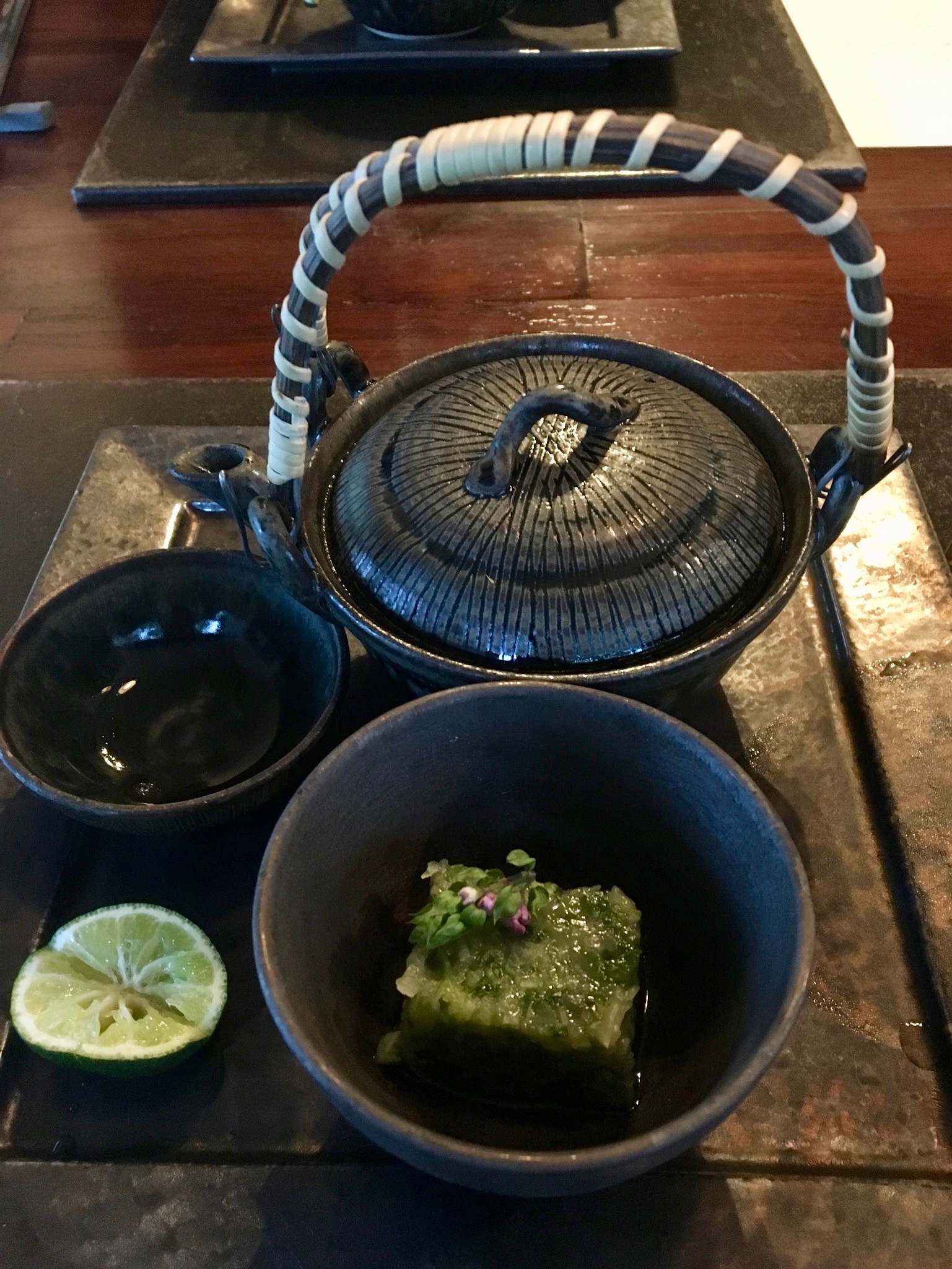
The new things I’d never tasted before were the flavorful white mountain wasabi that came with the sashimi, and a tiny lily bulb, which came on an assorted mountain vegetable plate, that I didn’t expect to be so much like a roasted chestnut. All of this was presented to us by our lovely server who was into all of Linda’s questions about what each of the herbs, plants and fish were and where they came from.
Mäneka and I slept excellently at the ryokan, and were sad to leave the next day. We hoarded all of the high end toiletries they have made for them, drank as much house-made juice that we could, and left our leather slippers at the door. We all could have spent an entire lifetime there living like modern woodsy Hokkaido royalty.
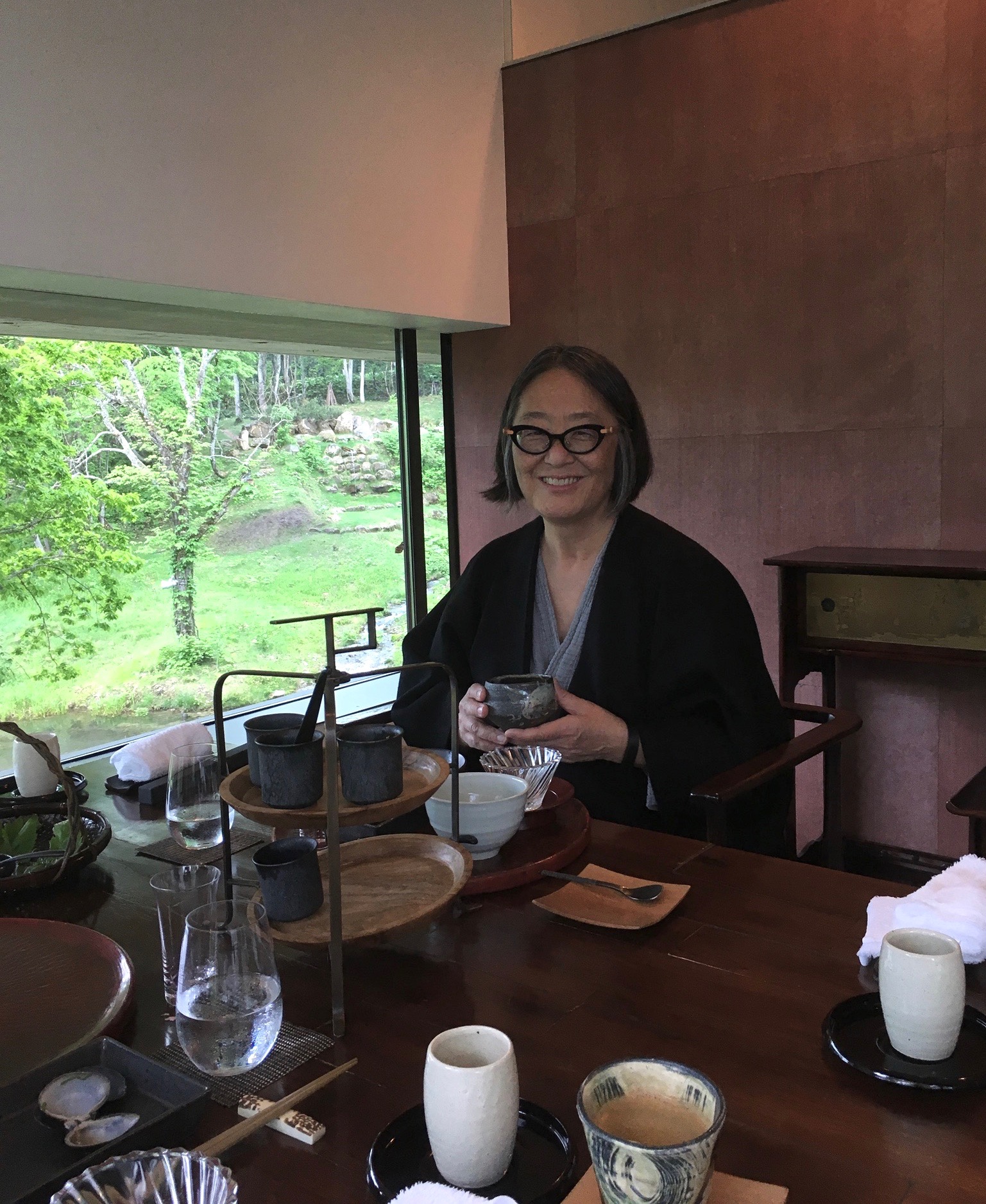
Balaram
After a hurried 1hour and 45 minutes self guided tour with an English brochure at the Nikka Distillery and an equally quick tasting in the tasting room, we hit the road for Zaborin. This is a ryokan in a remote part of Hokkaido west and south of Sapporo and Otaru.
Ryokans can be large or small and I had pictured a small traditional one for some reason for Zaborin as I had not looked at their site or other photos. It is striking in its modern concrete and glass architecture but with many traditional features, all set in the serenity of the Hokkaido woods. As we drove in, we were met by staff in traditional dress who whisked away our bags and we were taken to the “lobby”, which is a large room with floor to ceiling windows looking out to the verdant surroundings and an elevated platform in the center containing a fireplace with crisply burning wood beneath a stylish metallic hood. A pleasant smokiness permeated the air. The staff is highly attentive, providing a level of service that is only found at the very best places. My immediate thought was the service we experienced at the Oberoi Hotels in India during our 2007 trip with my uncle, aunt and cousins.
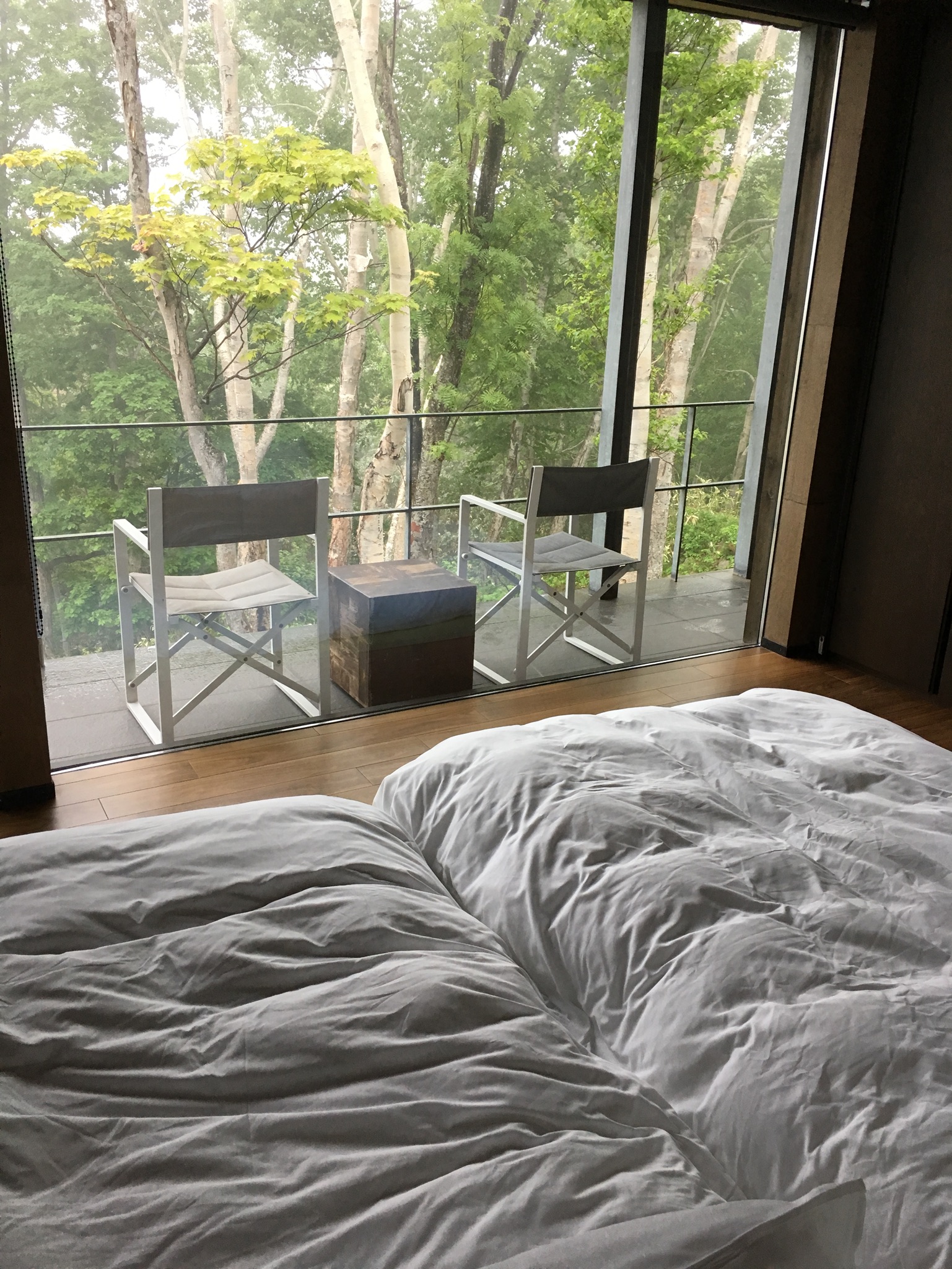
We were led to our room, identified as the Fubuki, which was located one floor up and at the end of an inclined corridor that connected one of the wings of rooms to the main building in which the library, a large living room, a tea ceremony room and a locked room filled with wine racks are located.

We had a traditional tatami room with floor to ceiling windows looking out to the surrounding forest and a farm on a hill beyond a gurgling stream. We had all the amenities: excellent Wi-Fi, a large television with Apple TV and. DVD player (which we never used), a well stocked snack bar and refrigerator and toilets with heated seats in which the top opens once you walk in the bathroom. The unique feature of this ryokan is that each room has its own hot baths, one inside and one on a small deck outside. The luxurious privacy is unsurpassed!
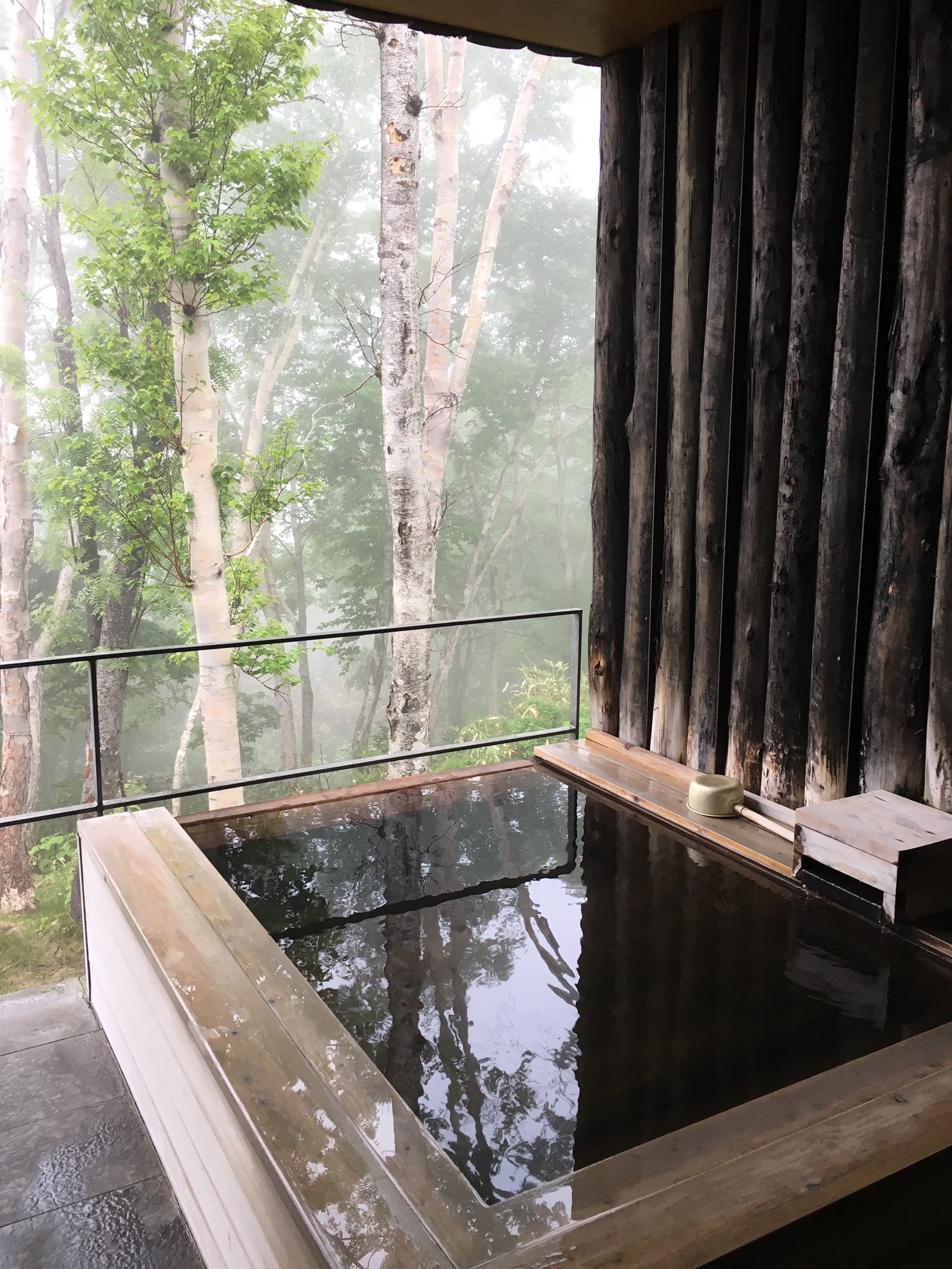
Our first order of business, however, was to change into traditional clothing consisting of comfortable loose fitting drawstring pants, a wrap around shirt, a short black jacket and two toed black socks with slippers and get to dinner in 30 minutes.
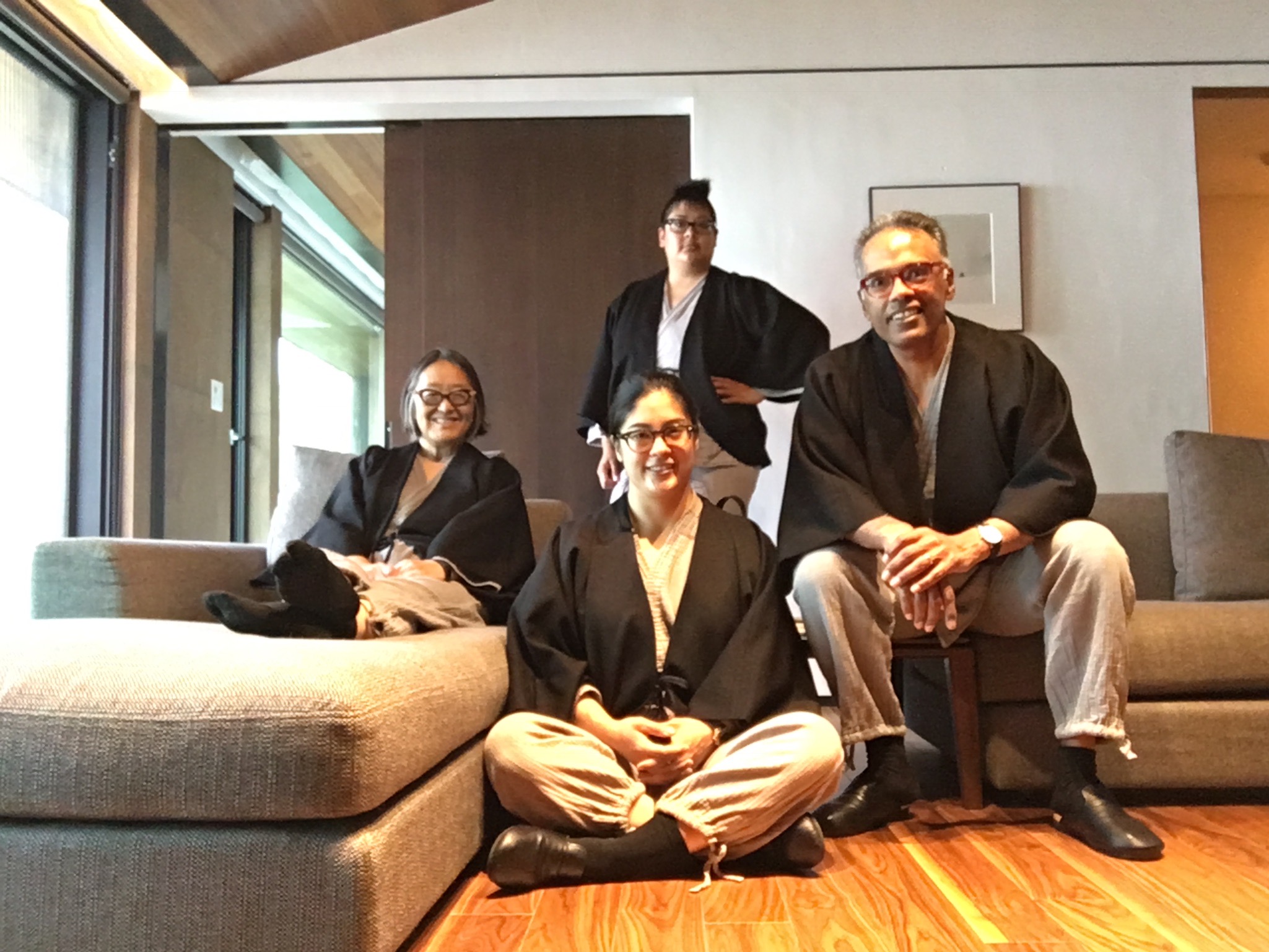
At Zaborin each party has a private dining room and ours was in a corner with views from two sides, one of a waterfall into a pond and stream and the other of the birch trees around the property. The menu, in Japanese and English, was at each setting promising a wonderful evening. The dinner consisted of many courses as detailed by others in their blogs, brought to us one at a time by a very pleasant young woman who kindly explained in English what we were eating, as well as other staff. The presentation and taste of each item was exquisite! Two hours and 15 minutes later we were escorted to the living room for dessert and tea.
When we returned to our room Mäneka quickly showered and got into the outside bath and Linda and BP soon joined her. The hot water with the surrounding cool night air was very invigorating! Later Kamala and Mäneka enjoyed the bath to themselves as L & B retired to the inviting futon beds.
BP was awakened initially (as Japan doesn’t have Daylight Savings, sunrise is at 4:20 AM) by the loud cawing of a crow and them by another bird whose call sounds like a phone alarm, causing BP to actually get up and check the phones. He was able to get back to sleep for another couple of hours, however. We got back into the garb for our 8:30 AM breakfast, another wonderful meal with numerous tasty dishes served by the same attentive young woman and an older staff member.
As checkout was at 11 AM, we lounged in our room and Kamala got into the bath once more. We finally got all packed and as we opened our door at 10:55, the staff was approaching our door ready to whisk our luggage back to the car and we went back to the lobby for checkout and enjoyed the views once more before taking the elevator to the parking lot. Our bags were already loaded and car ready to go. As BP had forgotten his sunglasses in the room (used as a support for Kamala’s phone for family shots in the living room of our room) one of the men literally ran up to the room to retrieve them. We all agreed that this was special and a highlight of the trip.
Linda
Delights of Zaborin Amongst the many Zaborin discoveries were the liquid delights provided to us during our stay.
- Birch tree juice upon check-in—clear colorless, white birch tree sap. Cool with just a touch of sweetness.
- Shiso juice during dinner—bright magenta, slightly sweet and acidic.
- Lemongrass scented birch tree juice poured over the zeri dessert.
- Apricot and apple juice—stocked in the living room refrigerator. Bottled essence of fruit.
- Champagne (that we ordered) with dinner!
Plateware
The arrangement of food certainly was the focal point. But each dish was presented on a piece of dishware that enhanced it. A mix of traditional and contemporary takes prompted so many trite exclamations of beauty. “Soooo beautiful.”
